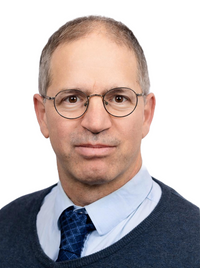Wrocław, Poland, April 29-30, 2025
Gadi Rothenberg is Professor and Chair of Heterogeneous Catalysis and Sustainable Chemistry at the University of Amsterdam and Distinguished Visiting Professor at Tsinghua University. He teaches courses on catalysis and workshops on communication and innovation. Rothenberg has published four books and 245 peer-reviewed papers, invented 16 patents and founded four companies. His research interests include clean energy, reactions at surfaces and creating value from waste.
Designing catalysts for practical hydrogen generation
The transition to hydrogen-based carbon-free energy carriers is crucial for reducing CO2 emissions and climate change. New catalysts and catalytic processes are essential here. In theory, switching to hydrogen is easy. In practice, it is not. Without reliable hydrogen generation, storage and transport, the energy market will not change.[1] This means that the materials used in hydrogen processes must be stable enough and cheap enough to compete with existing technologies in real markets.
Our group at the University of Amsterdam focuses on catalysts and materials for sustainable processes. For the past four years, we have been researching novel catalyst concepts for hydrogen generation.[2] In the lecture, I will show three examples, based on classical heterogeneous catalysis, bio-based minireactors,[3] and combined reactor/catalyst concepts using additive manufacturing.[4] Finally, I will present new findings[5] that show that even after 150 years, catalysis and materials science are still full of surprises…
[1] A realistic look at CO2 emissions, climate change and the role of sustainable chemistry. G. Rothenberg, Sust. Chem. Clim. Action, 2023, 2, 100012. DOI: 0.1016/j.scca.2023.100012 (open access)
[2] Understanding the behaviour of real metaborates in solution. F. Pope, N.I. Watson, A. Deblais and G. Rothenberg, ChemPhysChem, 2022, 23, e2022004. DOI: 10.1002/cphc.202200428 (open access)
[3] From shrimp balls to hydrogen bubbles: Borohydride hydrolysis catalysed by flexible cobalt chitosan spheres. F. Pope, J. Jonk, M. Fowler, P.C.M. Laan, N.J. Geels, L. Drangai, V. Gitis and G. Rothenberg, Green Chem., 2023, 25, 5727. DOI: 10.1039/d3gc00821e (open access)
[4] 3D printing of integrated metallic reactor-catalysts: concept and application. F. Pope, M. Fowler, D. Giesen, L. Drangai and G. Rothenberg, Chem. Eng. Technol., 2024, 47, 932. DOI: 10.1002/ceat.202400087 (open access)
[5] Borohydride hydrolysis using a mechanically and chemically stable aluminium-stainless steel porous monolith catalyst made by 3D printing. F. Pope, X. Xhaferri, D. Giesen, N.J. Geels, J. Pichler and G. Rothenberg, ChemSusChem, 2024, e202401264. DOI: 10.1002/cssc.202401264 (open access)
